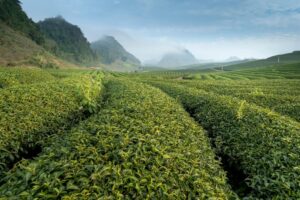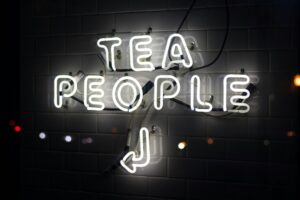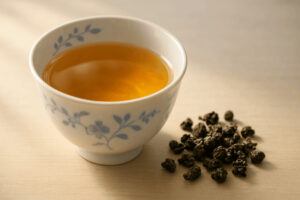Ever wondered if your favorite cup of oolong tea packs a caffeinated punch? You’re not alone. The question “Does oolong tea have caffeine?” is a common one among tea enthusiasts and health-conscious consumers alike. Let’s dive into the world of oolong tea and uncover the truth about its caffeine content, exploring its unique properties and how it compares to other beverages.
Oolong tea does contain caffeine, but the amount can vary widely, making it a versatile choice for different needs. The caffeine in oolong tea generally falls between that of green tea and black tea. On average, an 8-ounce cup of oolong tea contains about 37 mg of caffeine[1].Some varieties might have as little as 16.6 mg, while others can reach up to 55.4 mg per cup.
The oolong tea caffeine content is influenced by several factors. Brewing temperature plays a crucial role. Other factors include the tea’s cultivar, growing conditions, and even the season of harvest.
Understanding the caffeine in oolong tea can help you make informed choices about your tea consumption. Whether you’re looking for a gentle pick-me-up or trying to manage your caffeine intake, oolong tea offers a versatile option. Stay tuned as we explore the nuances of oolong tea’s caffeine content, its potential health benefits, and how you can tailor your oolong experience to your individual needs. For those looking to reduce their caffeine consumption, consider discarding the first steep. This can reduce caffeine content by up to 20%
Understanding Oolong Tea and Its Caffeine Properties
Oolong tea is a special type of tea, making up only 2% of all tea made worldwide. What makes it so unique? It gives a gentle energy boost, making it a favorite for those looking for a light pick-me-up and a more nuanced flavor profile compared to more processed teas.
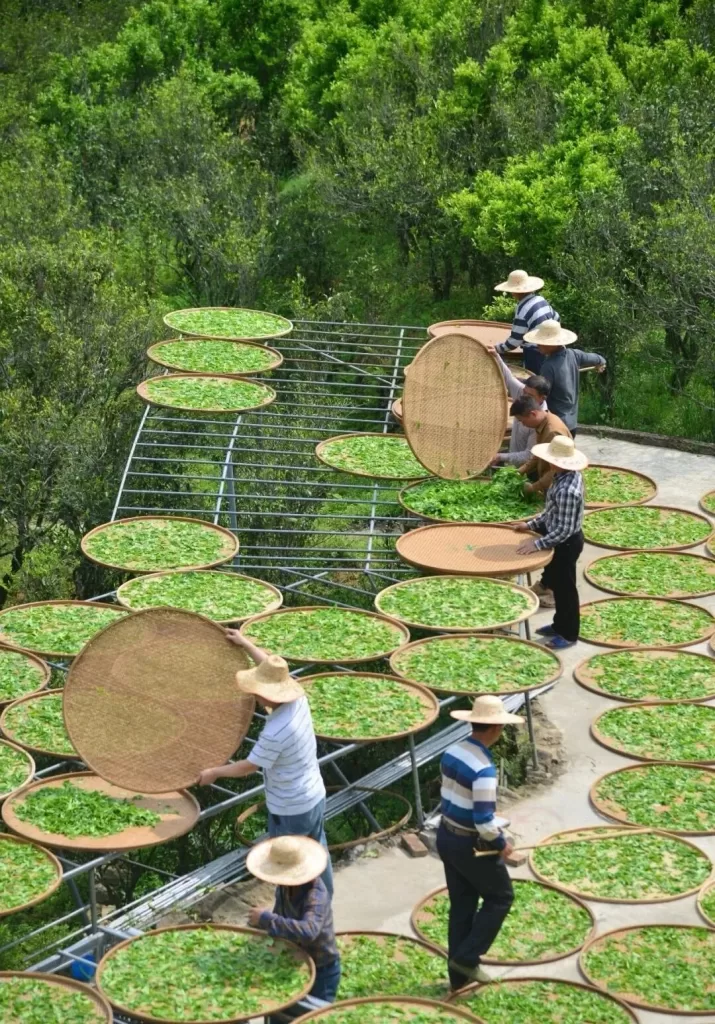
What Makes Oolong Tea Unique
Oolong tea is partially oxidized, sitting between green and black tea. Its oxidation levels can range from 8% to 80%, leading to different tastes and caffeine levels. Taiwan’s oolongs are often less oxidized, with a greener color and lighter taste compared to Chinese ones.
The oxidation process influences not only the flavor but also the caffeine release characteristics. It determines caffeine release, and the presence and the constitution of many other chemical components.
The Role of Oxidation in Caffeine Content
The oxidation process affects oolong tea’s caffeine level. An 8-ounce cup has about 38 mg of caffeine [1]. This is more than green tea but less than black tea. This makes oolong a great choice for those who are sensitive to caffeine and looking for a balanced energy boost.
| Oxidation Level | Caffeine Content (approximate) | Example Oolong Tea |
| 8% (Light) | 15-25 mg | Some Green Oolongs |
| 40% (Medium) | 30-45 mg | Phoenix Oolong Tea |
| 80% (High) | 50-60 mg | Formosa Oolong |
Chemical Composition of Oolong Tea
Oolong tea’s special mix of chemicals is good for your health. Drinking it regularly can lower heart disease, stroke, and cognitive decline risks [2]. It may also help with fat burning and bone health [3]. With its balanced caffeine and rich taste, oolong tea is a great choice for a caffeine boost and a wealth of health benefits, especially when enjoyed as part of a balanced lifestyle.
Azenbor’s oolong teas are crafted using whole leaves and natural processing methods, ensuring a rich concentration of these beneficial compounds. Unlike some commercially available tea bags that contain tea dust and artificial flavorings, Azenbor prioritizes quality and authenticity.
Important Note for Sensitive Individuals: While oolong tea offers many health benefits, it is important to consider caffeine intake, especially for pregnant women, individuals with anxiety, or those with heart conditions. The general recommendation is to limit caffeine intake to no more than 200mg per day during pregnancy [4]. Consult with your healthcare provider for personalized advice.
Does Oolong Tea Have Caffeine – Breaking Down the Facts
Oolong tea does have caffeine. It usually has between 10 to 60 milligrams per 8-ounce cup. This is similar to green tea, making it a good choice for those who want a bit of caffeine.
For coffee lovers, oolong tea’s caffeine might seem a bit low. But, a standard cup of coffee has 70 to 130 milligrams. So, oolong tea is a softer option for a gentle energy boost.
Interestingly, oolong tea makes up only 2% of global tea consumption. It’s mainly enjoyed in Asian countries like China and Taiwan. Tea drinking is a big part of their culture and social gatherings.
The caffeine in oolong tea has health benefits. It can help with weight management by increasing calorie burn by up to 3.4% [5]. It also has polyphenols that may lower blood sugar levels and reduce insulin resistance. This could lower the risk of diabetes [6].
- Oolong tea contains about 38 milligrams of caffeine per serving [1].
- Experts recommend not exceeding 400 milligrams of caffeine daily [7].
- Oolong tea is high in L-theanine, an amino acid that can improve brain activity and reduce stress [8].
To get the most caffeine from oolong tea, brew it at temperatures just below boiling. Steep for about 3 minutes. This method makes it stronger in antioxidants than green or black teas. However, remember that discarding the first steep can significantly reduce the caffeine content if you are sensitive.
Comparing Caffeine Levels: Oolong vs Other Beverages
Oolong tea’s caffeine content varies by type and brewing method. Let’s see how it compares to other popular drinks.
Oolong Tea vs Coffee Caffeine Content
Oolong tea has less caffeine than coffee. A 12-oz cup of coffee has 120-150 mg of caffeine. Oolong tea, on the other hand, offers different levels:
- High Mountain Oolong: 42-68 mg (first steep)
- Dong Ding Oolong: 50-76 mg (first steep)
- Iron Goddess of Mercy: 50-85 mg (first steep)
- Eastern Beauty: 68-102 mg (first steep)
Oolong Tea vs Green Tea Comparison
Oolong tea generally has more caffeine than green tea. Green tea has about 12 mg per 3.5 oz. Oolong can have up to 16 mg in the same volume. This difference comes from the processing methods.
Oolong Tea vs Black Tea Analysis
Oolong tea’s caffeine content is between green and black tea. Black tea usually has a bit more caffeine than oolong. For example, Aged Oolong has 25-51 mg in a 12-oz cup’s first steep. Black tea can have even more.
Caffeine levels can change with each steep. The FDA says up to 400 mg of caffeine a day is safe for adults [7]. Drinking 4-8 cups of oolong tea daily is a tasty, energizing choice without too much caffeine. However, individual sensitivity varies, so it’s always best to listen to your body.
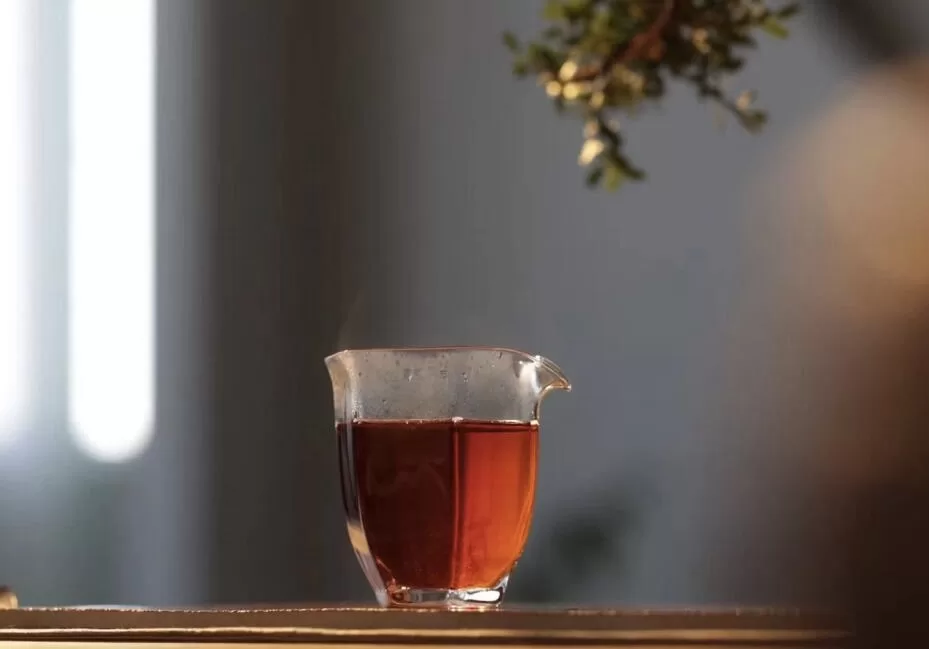
Factors Affecting Caffeine Content in Oolong Tea
The amount of caffeine in oolong tea can change a lot. Knowing why helps tea fans pick the right one for them.
Brewing Temperature Impact
How hot the water is matters a lot. Boiling water pulls out more caffeine than water at 80°C. So, you can make your oolong stronger or weaker by changing the water temperature.
Steeping Time Considerations
Steeping your oolong longer means more caffeine comes out. For instance, the third steep has only 30% of the caffeine from the first. This lets you control how much caffeine you drink. For those sensitive to caffeine, shorter steeping times are recommended.
However, for better enjoy the flavour of Azenbor phoenix oolong, we recommend you to brew shortly at the beginning steep.
Tea Leaf Quality and Processing
Several things affect how much caffeine is in oolong tea:
- Cultivar: Different tea plants have different caffeine levels
- Leaf age: Young leaves have more caffeine than older ones
- Growing conditions: Leaves grown in the shade have more caffeine
- Processing: Roasted oolongs have less caffeine than unroasted ones
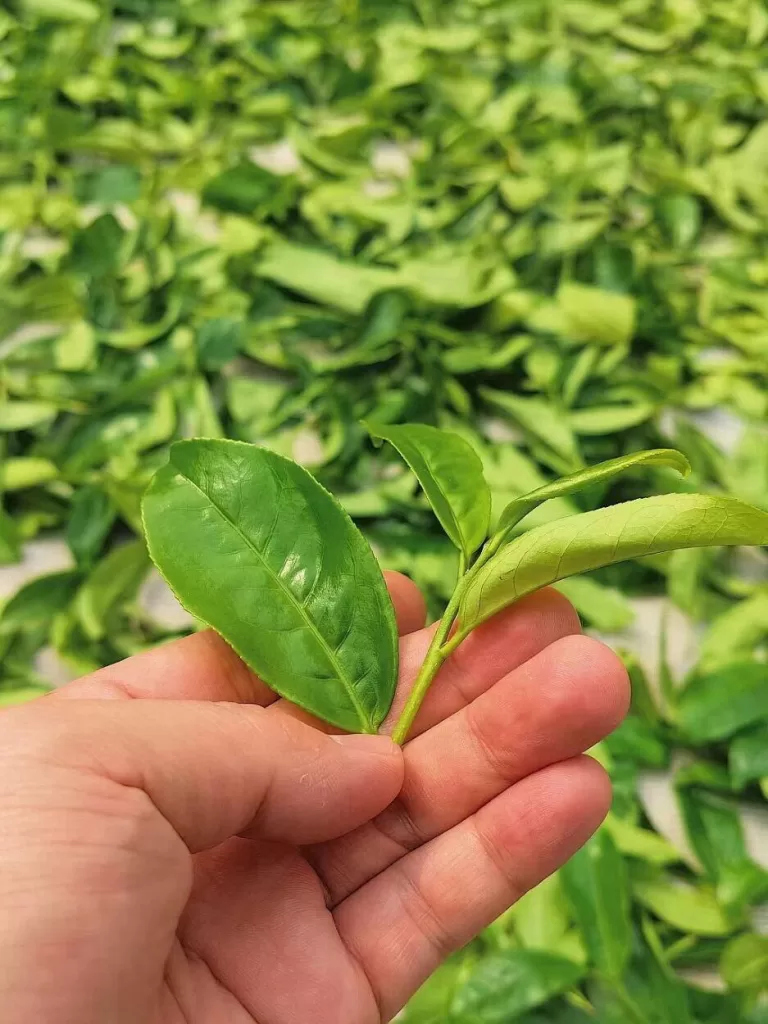
By thinking about these, you can pick oolong teas that fit your caffeine needs. Whether you want a strong morning tea or a gentle afternoon one, knowing these details helps you choose well.
The Science Behind Oolong Tea’s Caffeine Release
Oolong tea gives you a unique caffeine experience. It’s not like coffee, which hits you hard right away. Instead, oolong tea builds up your energy slowly. This makes it great for those who want to stay alert without feeling jittery. This slower release is due in part to the presence of tannins, which bind to caffeine and slow its absorption into the bloodstream.
The magic happens because of oolong tea’s special mix of chemicals. It has L-theanine, an amino acid that pairs well with caffeine. Together, they create a calm yet focused energy boost.
The amount of caffeine in oolong tea changes with how much it’s oxidized (a more accessible term for most readers). Less oxidized teas, like green teas, have less caffeine. More oxidized ones, like black teas, have more. This lets you pick the perfect tea for your energy needs.
- Oolong tea caffeine release is slower than coffee
- L-theanine in oolong tea promotes calm alertness
- Oxidation levels affect oolong tea’s stimulant properties
How you brew oolong tea also matters. Use water around 195°F and steep for 2-3 minutes. This way, you get the right mix of caffeine and other good stuff for a smooth energy boost.
Health Benefits of Oolong Tea’s Caffeine Content
Oolong tea is packed with health benefits, thanks to its mix of caffeine and other compounds. It has 30-50 milligrams of caffeine per cup. This gives a gentle energy boost without the jitters coffee can cause.
Energy and Mental Alertness
Oolong tea and alertness are closely linked. Its moderate caffeine content boosts focus and brain function. Many find its energy boost smoother and lasts longer than coffee’s sudden rush.
Metabolism and Weight Management
Oolong tea may help with weight management. A small study found it increased fat burning by 20% [5]. This could help keep weight in check.
Antioxidant Properties
Oolong tea’s antioxidants are a big plus for health. They fight inflammation and may lower disease risks. Some studies hint at its role in cancer prevention, but more research is needed.
- Protects heart health
- Supports liver function
- Promotes gut health
- May reduce diabetes risk
While oolong tea has many health benefits, it’s key to follow the FDA’s caffeine limit [7]. Enjoy it as part of a balanced diet and healthy lifestyle for its potential benefits.
Here for top 5 health benefits of drinking oolong tea.
Best Brewing Methods for Optimal Caffeine Extraction
Brewing methods are key to getting the right amount of caffeine in oolong tea. Each method can change how much caffeine you get in your tea. It’s important to know how to brew for the best caffeine extraction.
Traditional Gong Fu Method
The Gong Fu method uses a lot of tea leaves to water. This means you get more caffeine in your tea. It involves short steeping times and multiple infusions. This lets you control the caffeine and flavor in each cup.
Western Brewing Style
Western-style brewing uses longer steeping times and less tea leaves. This method can pull more caffeine from the tea. For example, brewing 5 grams of tea in 100ml of water at 100 degrees Celsius gets you about 67 mg of caffeine[9].
How to choose brewing method? Gungfu style or western brewing style?
Cold Brew Technique
Cold brewing oolong tea gives a milder caffeine kick. Using the same tea-to-water ratio at 20 degrees Celsius gets you only 2.2 mg of caffeine [9]. This method is great for those who want a softer caffeine experience but still enjoy oolong tea’s unique flavors.
Knowing these brewing methods lets you adjust your oolong tea to your liking. Try different techniques to find the perfect mix of flavor and caffeine. This way, you can enjoy oolong tea just how you like it.
Seasonal and Regional Variations in Oolong Tea Caffeine
Oolong tea’s caffeine levels change with the seasons and where it’s grown. Its unique semi-oxidation process, from 1% to 99%, affects its caffeine. Usually, an 8 oz cup of oolong tea has 30-50 mg of caffeine in the first brew [1].
When the tea leaves are picked matters a lot. Oolong tea leaves are picked later in spring, from late April to early May. This timing changes the tea’s chemical makeup, including its caffeine.
Where the tea is grown also changes its caffeine levels. The best oolong teas come from China’s Anxi and Fujian regions or Taiwan. These places have different weather and terrain, leading to changes in tea quality with each season. For instance, Taiwanese oolong production, starting in the mid-1900s, sees quality changes due to weather.
Also, oolong tea’s caffeine goes down with each brew. The second brew has about 15-25 mg, and the third has 5-10 mg. This lets tea lovers enjoy several cups a day without too much caffeine.
Managing Caffeine Intake with Oolong Tea
Oolong tea is a great way to balance your caffeine intake. It gives you an energy boost without too much caffeine. Here’s how to manage it well.
Timing Your Consumption
Drink oolong tea in the morning or early afternoon for the best effect. It keeps you alert during busy work hours without affecting your sleep. An 8-ounce cup has 30-50 mg of caffeine, less than coffee’s 80-100 mg. However, avoid consuming it too close to bedtime, especially if you are caffeine-sensitive.
Understanding Serving Sizes
Healthy adults can safely have 6-8 cups of oolong tea a day. This amount is within the FDA’s safe limit of 400 mg caffeine daily [7]. Remember, caffeine levels vary among oolong types:
- High Mountain Oolong: 42-68 mg per 12 oz cup
- Dong Ding Oolong: 50-76 mg per 12 oz cup
- Iron Goddess of Mercy: 50-85 mg per 12 oz cup
Multiple Steeping Effects
Oolong tea can be steeped multiple times, with each steep having less caffeine. The first steep has the most, and later ones have less. For example, High Mountain Oolong’s caffeine goes from 42-68 mg in the first steep to 8-20 mg by the third. This lets you control your caffeine intake all day.
If you want to be extra careful with caffeine, discard the first steep altogether. This initial steep often contains a significant portion of the total caffeine. This also reduces the astringency found in some teas, giving you a sweeter and cleaner flavor.
Conclusion
Does oolong tea have caffeine? Yes, it does. Oolong tea has about 30 to 50 milligrams of caffeine in an 8-ounce cup [1]. This is more than green tea but less than black tea.
Looking for a milder caffeine kick? Oolong tea is a good choice. It’s less caffeinated than coffee, which has 80 to 100 milligrams per cup.
The type of oolong tea, where it’s grown, and how it’s made also play a part. Interestingly, teas grown in summer and fall have more caffeine than those grown in spring and winter.
Knowing about oolong tea’s caffeine is important for enjoying it safely. It’s packed with antioxidants and can help your heart and even with weight management. By adjusting how you brew it and watching how much you drink, you can make your oolong tea just right for you.
Ultimately, the best way to enjoy oolong tea and manage your caffeine intake is to be mindful of your body’s response. Experiment with different brewing methods and oolong varieties to find what works best for you.
Does oolong tea contain caffeine?
Yes, oolong tea does contain caffeine. It has about 30-50mg per 8oz (237ml) cup. This is between green and black tea levels.
What factors affect the caffeine content in oolong tea?
Many things affect oolong tea’s caffeine. These include brewing temperature, steeping time, and tea quality. The oxidation level, cultivar, growing conditions, and processing methods also play a role. For example, hotter water and longer steeping times mean more caffeine.
Are there health benefits associated with oolong tea’s caffeine content?
Yes, oolong tea’s caffeine boosts energy and mental alertness. It may also help with metabolism and weight management. The caffeine and antioxidants in oolong tea can improve cognitive function and heart health.
Do different oolong tea varieties have varying caffeine levels?
Yes, caffeine levels vary in oolong tea varieties. This is due to growing conditions, processing methods, and oxidation levels. More oxidized teas generally have a bit more caffeine.
Does the caffeine in oolong tea affect sleep patterns?
Yes, oolong tea can affect sleep if consumed close to bedtime. It’s best to avoid caffeine a few hours before bed to ensure good sleep.
Can pregnant women drink oolong tea?
Pregnant women should limit their caffeine intake to no more than 200mg per day. Oolong tea can be enjoyed in moderation, but it’s important to be mindful of the caffeine content. Consult your healthcare provider for personalized advice.
How does the caffeine content in oolong tea compare to coffee?
Oolong tea has less caffeine than coffee. A 3.5oz (100ml) cup of oolong tea has 16mg of caffeine. Coffee has about 42mg in the same amount.
How does oolong tea’s caffeine release differ from coffee?
Oolong tea’s caffeine is released more slowly than coffee’s. This gives a gradual energy boost. This is because of L-theanine, which helps calm you down and reduces jitters.
How does the brewing method affect caffeine extraction in oolong tea?
Brewing methods change caffeine extraction. The Gong Fu method, with a high leaf-to-water ratio, has more caffeine. Western-style brewing with longer steeping times also extracts more. Cold brewing, however, has less caffeine.
How can I manage my caffeine intake when drinking oolong tea?
To manage caffeine, watch your serving sizes and timing. Each steeping of oolong tea has less caffeine. The third steep has about 30% of the first brew’s caffeine. This helps control caffeine intake.
How does the caffeine content in oolong tea compare to green tea?
Oolong tea has more caffeine than green tea. A 3.5oz (100ml) cup of oolong tea has about 16mg of caffeine. Green tea has 12mg in the same amount. But, caffeine levels can vary by tea variety and brewing method.
Reference:
- Graham, H.N. (1984). Tea composition, consumption, and its relationship to human health. Preventive Medicine, 13(4), 334-350.
- Yang, H. Y., et al. “Effects of habitual tea consumption on cognitive function: a meta-analysis.” PloS one 9.9 (2014): e107884.
- Wu, C. H., et al. “The effect of oolong tea consumption on bone mineral density: a meta-analysis of observational studies.” Osteoporosis International 26.1 (2015): 25-32.
- American College of Obstetricians and Gynecologists
- Rumpler, W., et al. “Oolong tea increases metabolic rate and fat oxidation in men.” The Journal of Nutrition 131.11 (2001): 2848-2852.
- Anderson, R. A., et al. “Isolated components of tea (Camellia sinensis L.) prevent glucose intolerance in high-fructose-fed rats.” Journal of Agricultural and Food Chemistry 49.11 (2001): 5243-5248.
- EFSA Panel on Dietetic Products, Nutrition and Allergies (NDA). “Scientific Opinion on the safety of caffeine from all sources.” EFSA Journal 13.5 (2015): 4102.
- Nobre, A. C., et al. “L-theanine, a natural constituent in tea, and its effect on mental state.” Asia Pacific Journal of Clinical Nutrition 17 Suppl 1 (2008): 167-168.
- Li, S., et al. “Optimization of microwave-assisted extraction of caffeine and catechins from green tea.” Journal of Chromatography A 1216.19 (2009): 4145-4151.

